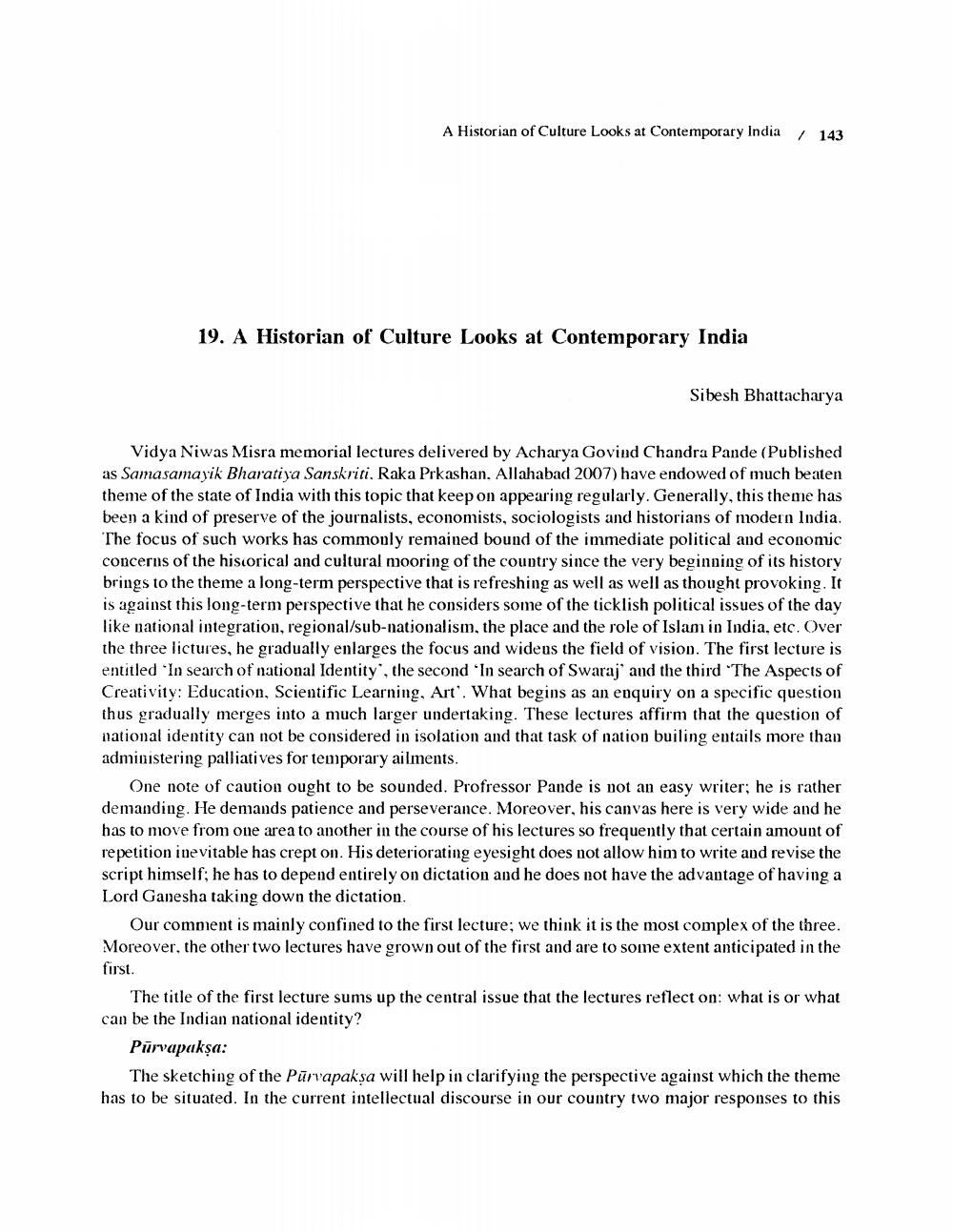________________
A Historian of Culture Looks at Contemporary India
/ 143
19. A Historian of Culture Looks at Contemporary India
Sibesh Bhattacharya
Vidya Niwas Misra memorial lectures delivered by Acharya Govind Chandra Pande (Published as Samasamayik Bharatiya Sanskriti. Raka Prkashan. Allahabad 2007) have endowed of much beaten theme of the state of India with this topic that keep on appearing regularly. Generally, this theme has been a kind of preserve of the journalists, economists, sociologists and historians of modern India, The focus of such works has commonly remained bound of the immediate political and economic concerns of the historical and cultural mooring of the country since the very beginning of its history brings to the theme a long-term perspective that is refreshing as well as well as thought provoking. It is against this long-term perspective that he considers some of the ticklish political issues of the day like national integration, regional/sub-nationalism, the place and the role of Islam in India, etc. Over the three lictures, he gradually enlarges the focus and wideus the field of vision. The first lecture is entitled 'In search of national Identity, the second 'In search of Swaraj and the third "The Aspects of Creativity: Education, Scientific Learning, Art'. What begins as an enquiry on a specific question thus gradually merges into a much larger undertaking. These lectures affirm that the question of national identity can not be considered in isolation and that task of nation builing entails more than administering palliatives for temporary ailments.
One note of caution ought to be sounded. Profressor Pande is not an easy writer; he is rather demanding. He demands patience and perseverance. Moreover, his canvas here is very wide and he has to move from one area to another in the course of his lectures so frequently that certain amount of repetition inevitable has crept on. His deteriorating eyesight does not allow him to write and revise the script himself: he has to depend entirely on dictation and he does not have the advantage of having a Lord Ganesha taking down the dictation.
Our comment is mainly confined to the first lecture; we think it is the most complex of the three. Moreover, the other two lectures have grown out of the first and are to some extent anticipated in the first.
The title of the first lecture sums up the central issue that the lectures reflect on: what is or what can be the Indian national identity?
Pūrvapakşa:
The sketching of the Pārvapaksa will help in clarifying the perspective against which the theme has to be situated. In the current intellectual discourse in our country two major responses to this




